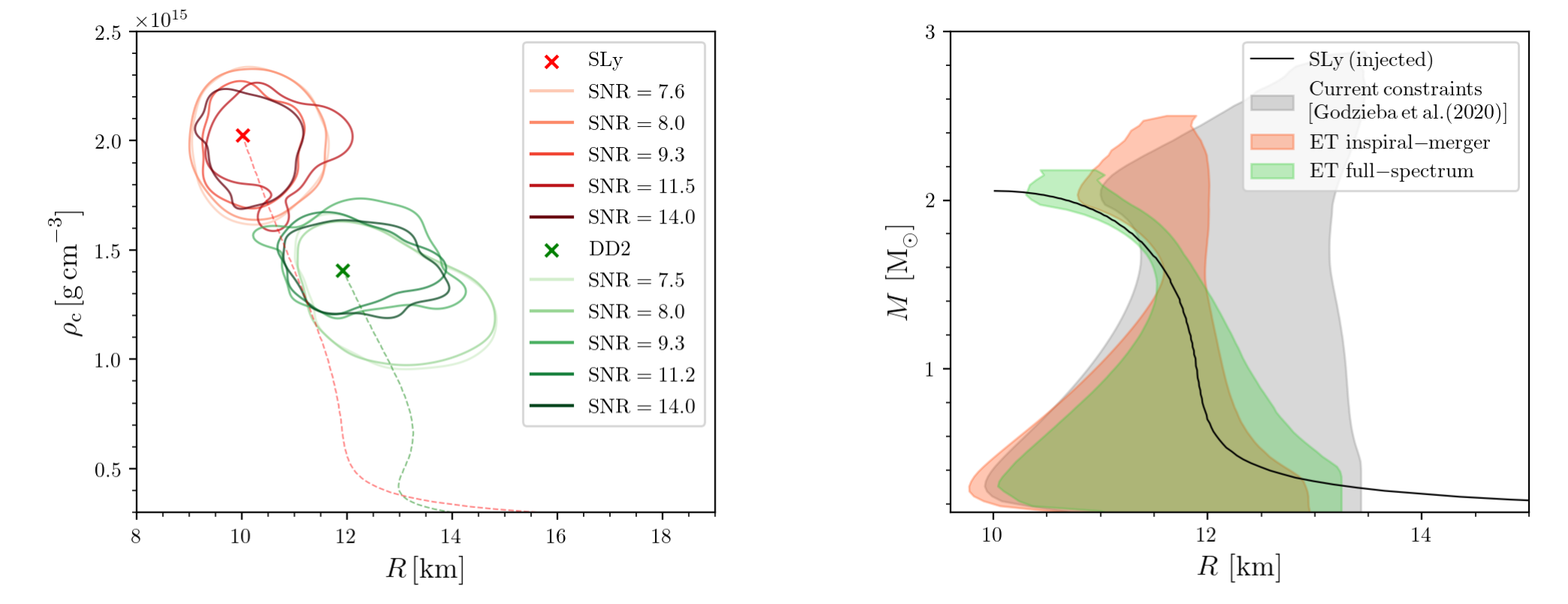Constraints on the maximum densities of neutron stars from postmerger gravitational waves with third-generation observations
Matteo Breschi, Sebastiano Bernuzzi, Daniel Godzieba, Albino Perego, David Radice
Preprint on arxiv:2110.06957 [gr-qc]
Published in Phys.Rev.Lett. 128 (2022) 16, 161102
Published:
Using data from 289 numerical relativity simulations of merging binary neutron stars, we identify, for the first time, a robust quasi-universal relation connecting the postmerger peak gravitational-wave frequency and the value of the density at the center of the maximum mass nonrotating neutron star. This relation offers a new possibility for precision equation-of-state constraints with next-generation ground-based gravitational-wave interferometers. Mock Einstein Telescope observations of fiducial events indicate that Bayesian inferences can constrain the maximum density to ∼15% (90% confidence level) for a single signal at the minimum sensitivity threshold for a detection. If the postmerger signal is included in a full-spectrum (inspiral-merger-postmerger) analysis of such signal, the pressure-density function can be tightly constrained up to the maximum density, and the maximum neutron star mass can be measured with an accuracy better than 12% (90% confidence level).

